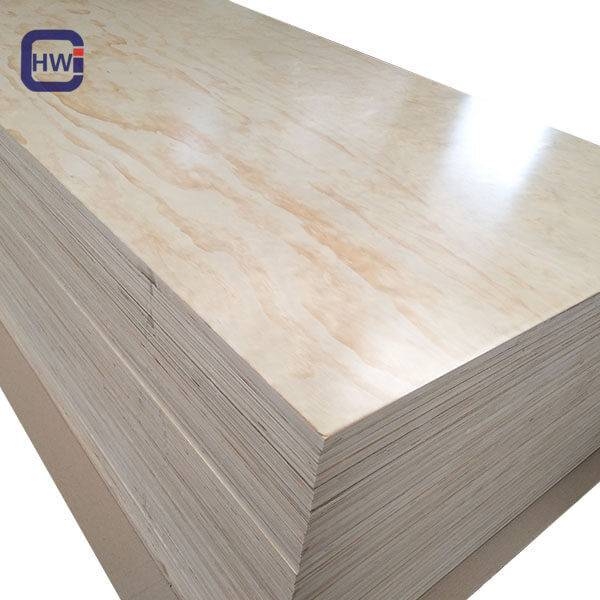Plywood stands as a cornerstone for furniture manufacturing, offering a unique blend of versatility and strength. This introduction explores the essential role plywood plays in furniture design, emphasizing its significance in achieving the delicate equilibrium between artistic expression and functional utility. As a canvas for innovation, plywood elevates furniture craftsmanship, setting the stage for a harmonious synthesis of form and function in the world of design.
The Versatility of Plywood
Different Types and Grades of Plywood Commonly Used
Plywood’s versatility is underscored by the myriad types and grades available, catering to diverse furniture needs. From hardwood plywood known for its durability to softwood plywood for flexibility, the range of options empowers furniture craftsmen with choices tailored to specific design and functionality requirements. Understanding these variations is essential in optimizing plywood for various furniture applications.
Plywood as a Flexible Material for Various Furniture Styles
Plywood’s adaptability shines through in its ability to conform to diverse furniture styles. Whether crafting sleek, modern pieces or traditional, timeless designs, plywood serves as a versatile medium. Its capacity to be molded into curves and complex shapes enables the creation of furniture that transcends stylistic boundaries, providing designers the freedom to explore a spectrum of aesthetic possibilities.
The Aesthetic Appeal and Natural Beauty of Plywood
Beyond its utilitarian aspects, plywood boasts inherent aesthetic charm. Exposing the layers in the design adds a touch of visual intrigue, celebrating the material’s natural beauty. The warmth of wood grain and the option to showcase or conceal layers offer designers a palette for creativity. Plywood’s aesthetic allure complements various design themes, contributing to furniture pieces that are not only functional but also visually captivating.
Structural Prowess of Plywood
Plywood’s Strength and Durability in Furniture Construction
Plywood’s structural strength is a defining feature in furniture manufacturing. Composed of layers glued together with grains running perpendicular to each other, plywood gains superior strength. This construction method contributes to its ability to withstand weight and pressure, making it an ideal choice for constructing sturdy and enduring furniture pieces.

The Role of Plywood in Creating Stable and Long-lasting Furniture
Stability is paramount in furniture, and plywood’s dimensional stability ensures that it remains resilient to changes in temperature and humidity. This property is crucial in preventing warping or twisting, promoting the longevity of furniture. The stability of plywood is particularly advantageous in crafting furniture that withstands the test of time, offering consumers pieces that endure both functionally and aesthetically.
Advantages Over Other Materials in Terms of Resilience and Performance
Plywood outshines many other materials in terms of resilience and overall performance. Compared to solid wood, plywood exhibits enhanced resistance to cracking, splitting, and shrinkage. This durability translates into furniture that maintains its structural integrity, making plywood a preferred choice for pieces subject to wear and tear. Additionally, plywood’s consistent strength across its entire surface allows for the creation of larger, more ambitious furniture designs without compromising on stability.
Design Possibilities with Plywood
Innovative Furniture Designs Achievable with Plywood
Plywood catalyzes innovation in furniture design, offering a platform for the realization of inventive and unconventional concepts. Its inherent flexibility allows designers to experiment with shapes, curves, and structures not easily attainable with other materials. From modular shelving units to futuristic chair designs, plywood provides a canvas for pushing the boundaries of creativity, encouraging the development of truly groundbreaking furniture.
Plywood as a Canvas for Artistic and Unique Furniture Creations
Plywood’s unique layered composition transforms it into a blank canvas for artistic expression. Designers can leverage the material’s natural beauty by exposing its layers or enhancing it with veneers, creating visually striking patterns. This artistic flexibility extends to intricate detailing, such as laser-cut designs and carved patterns, allowing for personalized and unique furniture creations that merge functionality with aesthetic appeal.
Balancing Form and Function in Plywood Furniture Design
Achieving a harmonious balance between form and function is a hallmark of plywood furniture design. Its adaptability enables the creation of furniture that not only captivates aesthetically but also serves practical purposes seamlessly. Plywood’s structural strength allows for the crafting of lightweight yet robust pieces, embodying the essence of functional art. This balance ensures that each design is not only visually appealing but also user-friendly and purposeful.
Plywood as the Cornerstone of Craftsmanship
Exceptional Furniture Crafted with Plywood
Examining case studies illuminates the transformative impact of plywood on exceptional furniture craftsmanship. Whether it’s the iconic curves of mid-century modern chairs or the modular brilliance of contemporary shelving units, plywood has been integral to the creation of enduring and influential pieces. These case studies serve as a testament to plywood’s ability to elevate furniture design to new heights.
The Integration of Plywood in Traditional and Modern Furniture Making
Plywood seamlessly integrates into both traditional and modern furniture-making practices, showcasing its timeless relevance. In traditional craftsmanship, plywood is employed to enhance structural stability, while in modern design, it becomes a medium for cutting-edge aesthetics. The material’s adaptability ensures its continued prominence in the evolution of furniture making, bridging the gap between classic and contemporary approaches.
Plywood’s Contribution to Achieving Excellence in Craftsmanship
Plywood’s contribution to achieving excellence in craftsmanship extends beyond its physical properties. It embodies a philosophy that values precision, innovation, and the pursuit of perfection. Craftsmen working with plywood embrace its malleability, utilizing it to push the boundaries of design while maintaining the highest standards of quality. Plywood, therefore, becomes not just a material but a cornerstone in the ethos of craftsmanship, inspiring artisans to continually strive for excellence in their creations.
CONCLUSION
In conclusion, plywood emerges as a transformative force, marrying artistry with utility in furniture manufacturing. Its versatility fuels innovative designs, while its structural prowess ensures enduring craftsmanship. As the cornerstone of this creative journey, plywood becomes more than a material—it embodies the essence of excellence, inspiring furniture makers to push boundaries and redefine the art of crafting functional, aesthetic masterpieces.
Post time: 20 11 月, 2023
